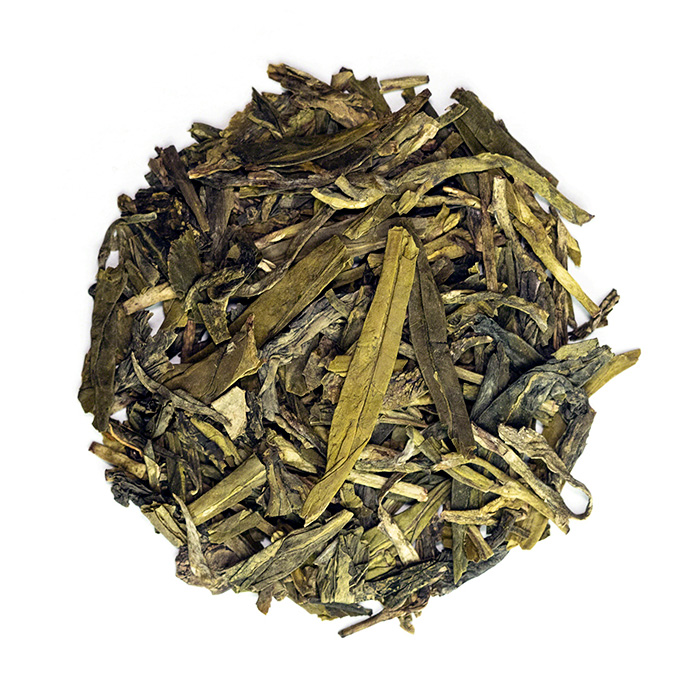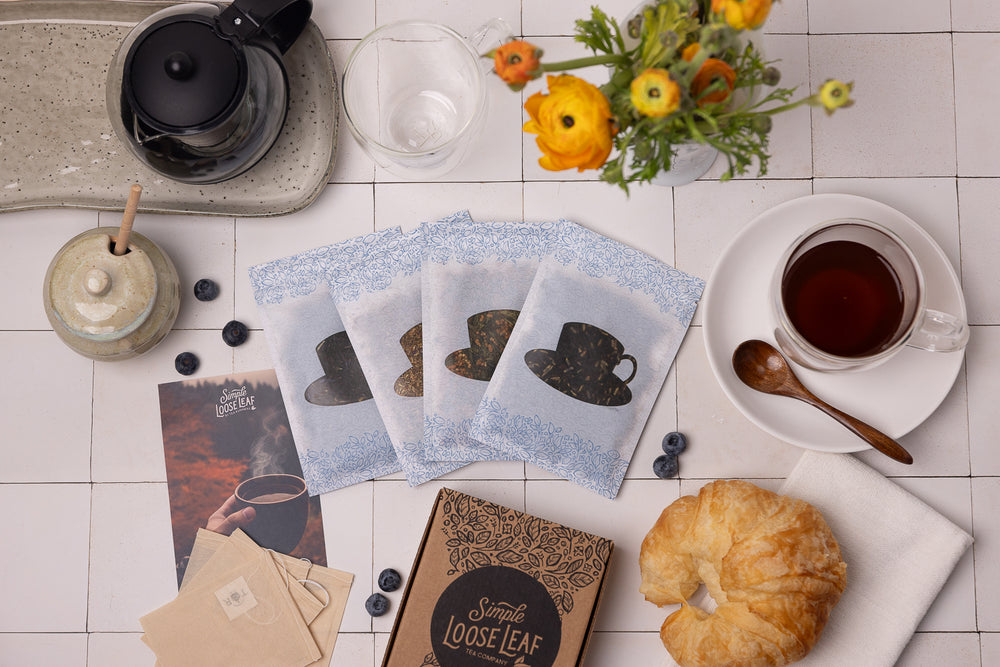3 Best Dragon Well Teas
Dragon Well is sweet, light, and visually different from other “regular” green teas. This tea with a long history and character is a tea every tea lover should try at least once in life. It’s nothing like a regular cup of strong green tea and it’s almost exclusively available as loose leaf.

What is Longjing tea
Longjing, Lung Ching or Dragon Well is a Chinese green tea from Zhejiang. It’s one of the top 10 famous Chinese tea. And, for a good reason. Dragon Well is a tea with long history of more than 1000 years[1]. As many important and famous Chinese teas, this tea too, has a legend behind its name. Legend has it that the Qing Dynasty emperor Qianlong, during one visit to the Shi Feng mountain saw local women picking tea leaves and decided to join them. Suddenly, he received news about his mother falling ill and rushed back with tea leaves still in his pocket. Once home, the sweet scent reminded him of the forgotten leaves. He brewed them for his mother and soon after she recovered[2]. To show appreciation, he planted 18 tea trees in the royal tea garden at Shi Feng in the Long Jing Village. However, Dragon Well was mentioned many years before the Emperor Qianlong had a chance to try it. The first written proof of this tea appears in the book written by one of the first Chinese tea masters – Lu Yun in the second part of 8th century[3].How is Longjing made?
Dragon Well is made from young tea buds and one or two attached tea leaves. Once brewed, you can see the small buds with leaves floating in the cup. After harvesting, leaves are withered and pan-fried to stop the oxidation process. This step gives Dragon Well a light toasty and roasted chestnut note, unlike steamed teas that are mostly vegetal. Leaves are then flattened to achieve the final appearance.Interesting fact: When some tea is featured on the list of top ten famous tea among thousands of others, it cannot be anything but exceptional. But, it often carries a high price tag too, especially if it comes from protected original sources. The most expensive Long Jing was sold for $57,000 per kilo[4].
Best Dragon Well teas
Best Dragon Well by harvest
Dragon Well is a true spring tea. It’s harvested twice a year, both times in spring. The first, pre-qing ming tea is lighter and sweeter, with leaves that had more time to grow before being harvested. The second, after qing ming harvest, is stronger, but never as strong as most other Chinese green teas. So what is Qing Ming? Qing Ming is a traditional Chinese festival in the beginning of April. Remember shincha, a term used for the first fresh Japanese green tea? Simplified, pre-Qing Ming is the first harvest of the Chinese green tea. Just like shincha, pre-Qing Ming teas will always be more expensive. However, as the true Dragon Well always tastes delicious, which one is better will depend on your personal preferences too. Learn the difference between Japanese and Chinese tea here.Best Dragon Well by location
All authentic Dragon Well comes from the Chinese Zhejiang province. However, even in the same province, there are specific areas where the original tea can be produced. If we want to narrow it more down, then it should also be grown in the Xi Hu or West Lake area. And even this can be narrowed to specific small regions. The best dragon well from the original source is:- Shi Feng Long Jing– considered the original one, often the most expensive
- Mei Jia Wu Long Jing– second famous long jing origin
- Xi Hu Long Jing– other long jing teas from Xi Hu region but not from Shi Feng or Mei Jia Wu
Best Dragon Well by cultivar
There are many Dragon Well tea varietals. Many are usually made from a specific Camellia sinensis cultivar – Longjing#43. This cultivar is often regarded as one of the best for making this tea, as it is popular for its small and uniformed tea leaves and yellow green color. However, there are many other cultivars that can be used for making this exceptional tea – each with a slightly different flavor profile and color. Color can range from lighter yellow green to jade green color and darker green.Interesting fact: Dragon Well cultivar Longjing #43 can be used for making black tea too – Red Plum black tea or Jiu Qu Hong Cha. This tea is sometimes called Black Dragon Well. However, unlike green Long Jing, it has long and wiry leaves.
The bottom line
Today, there are many tea plantations growing this tea. When choosing the best Dragon Well tea it’s important to be guided by your taste buds. No matter the origin, cultivar or harvesting time, good tea will always be pleasant to drink, without extreme bitterness and with a specific sweet aftertaste. Teas from outside Zhejiang may be exceptional too, especially when produced by artisan tea makers in small batches.
Dragonwell tea benefits
Dragon Well tea is a green tea. Therefore, it shares the same potential health benefits of other green teas. However, because only the young and fresh tea buds and leaves are used for making this tea, the total level of nutrients in tea will be different than in some other green tea types. How many nutrients will be in each cup depends on a tea cultivars too, on soil, rain and sunshine, and on the whole processing method, storing conditions and brewing technique. Green tea contains EGCg, a catechin with a potent antioxidant activity, one of the amino acids with calming properties L-theanine, caffeine, vitamins, minerals and other active compounds. It has anti-cancerogenic, anti-aging, anti-inflammatory and anti-bacterial properties. Dragon Well has a fairly high level of caffeine. A study on caffeine and theobromine in different types of tea showed that Dragon Well has around 75 mg of caffeine per cup. Infusions were made with 5 grams of tea leaves, steeped in 200 ml of water for 2 minutes. Water temperature was between 158-176°F. Although the flavor may be gentle, spring teas made with fresh buds usually have higher levels of caffeine. The same research showed that Dragon Well has the highest level of theobromine. In fact, with 2.57 mg per 200 ml, the levels of theobromine may be higher than in some black teas[5]. Green tea may significantly lower blood pressure in those suffering from high blood pressure[6], may potentially help with preventing some cancers[7] and protect the skin[8]. Furthermore, catechins in green tea may help burn fat faster[9], especially if combined with regular exercise. Studies showed that drinking green tea may help fight the bacteria in the mouth[10] and may be very effective for reducing bad breath[11].How to brew Dragon Well tea
Traditionally, Dragon Well is not brewed using a regular teapot or a strainer. It’s brewed in a glass and drank with tea leaves inside. When buying unpolluted and organic high quality green tea, tea leaves are very likely safe to eat. Use about 3-4 grams of tea per glass of water (7-8 oz). Spring water is an absolute must for brewing Dragon Well. Water temperature should be around 185°F. Dragon Well can handle even a few degrees more. Steep for about two minutes or less. Re-steep the same leaves by adding more water. Research showed that the antioxidant activity is present even in the sixth infusion. Therefore, to get the most out of the tea leaves, never throw them away after the first infusion[12].Disclaimer: This article is for informational purposes only. It’s not intended to replace medical advice, diagnosis or treatment. Every person is different and may react to different herbs and teas differently. Never use teas or herbs to treat serious medical conditions on your own. Always seek professional medical advice before choosing home remedies.
References:
[1] https://www.chinahighlights.com/travelguide/chinese-tea/west-lake-dragon-well-tea.htm [2] https://www.chinahighlights.com/travelguide/chinese-tea/west-lake-dragon-well-tea.htm [3] https://en.wikipedia.org/wiki/The_Classic_of_Tea [4] https://worldteanews.com/tea-industry-news-and-features/first-flush-chinese-longjing-tops-price-of-gold [5] https://www.researchgate.net/publication/338211444_Determination_of_methylxanthines_in_tea_samples_by_HPLC_method [6] https://www.ncbi.nlm.nih.gov/pmc/articles/PMC4150247/ [7] https://www.researchgate.net/publication/262976931_Green_Tea_and_Anticancer_Perspectives_Updates_from_Last_Decade [8] https://www.ncbi.nlm.nih.gov/pmc/articles/PMC3390139/ [9] https://www.ncbi.nlm.nih.gov/pmc/articles/PMC4517022/ [10] https://www.ncbi.nlm.nih.gov/pmc/articles/PMC3941855/ [11] https://www.ncbi.nlm.nih.gov/pubmed/18388413 [12] https://www.ncbi.nlm.nih.gov/pmc/articles/PMC4549831/
More from:
SLL




Leave a comment